Amgueddfa Cymru is a national organisation with seven museums across Wales and a national collection centre. We're a charity and a public sponsored body, supported by the Welsh Government. All our museums are free to enter, thanks to Welsh Government funding.
Each museum offers a diverse visitor experience, including a programme of public exhibitions and events, unique cultural and heritage experiences, shops and cafés. We believe that cultural heritage can change lives and inspire people. The museums and the national collections belong to the people of Wales and are open to all. We work in partnership with communities and visitors to develop our programmes and services.
National Slate Museum
The National Slate Museum is located in Llanberis, Gwynedd, at the foot of what was one of the largest slate quarries in the world – Dinorwig Quarry. The museum is housed in what were the original engineering workshops, built in 1870. The quarry closed in 1969, before reopening as a museum in 1972. It welcomes around 145,000 visitors a year.
The museum tells the story of the slate industry in Wales. Visitors can see slate being split and dressed by our skilled craftspeople, all of whom are former quarry workers who learned their craft at the neighbouring Penrhyn Quarry. Even today, you still need a human hand to work the more difficult rock.
Visitors can watch a blacksmith working at the original forge, and we have the largest functioning waterwheel in Britain, which once powered all the machinery in the workshops. The quarry workers’ houses are also hugely popular. These were moved to the site to take visitors on a historical journey through the different periods when people lived in them.
Following the exciting announcement that the Slate Landscape of Northwest Wales is now a UNESCO World Heritage Site, we’re looking forward to redeveloping aspects of the museum to extend its potential and enhance the visitor experience.
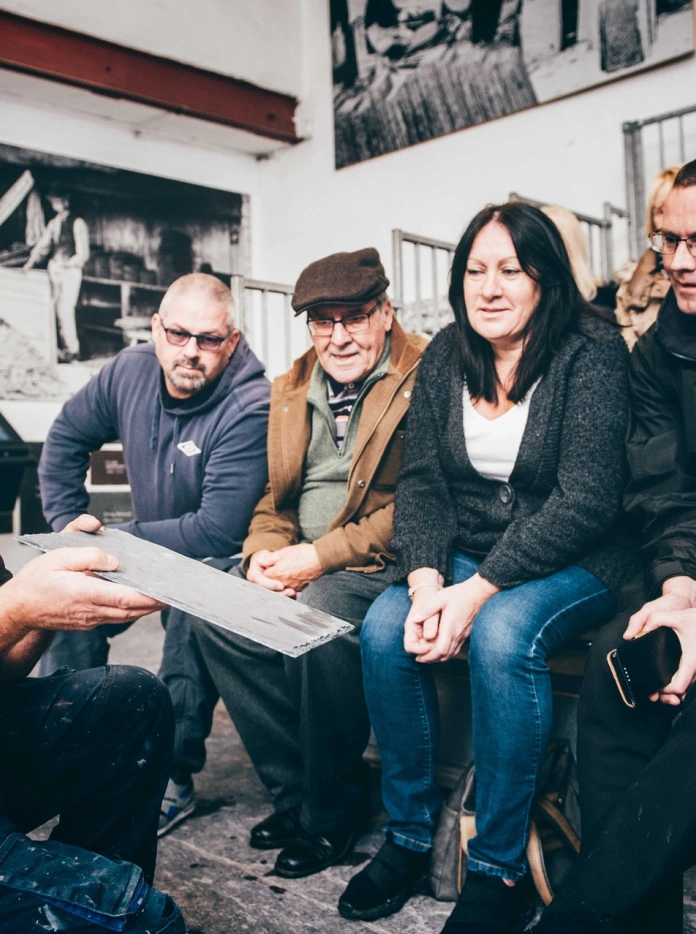
National Wool Museum
The National Wool Museum is one of Amgueddfa Cymru’s smaller museums, receiving about 32,000 visitors annually. It tells the story of wool production, from fleece to fabric. The museum is located at the former Cambrian Mills, once the largest mill in the village of Drefach Felindre in rural West Wales. This was the centre of the Welsh woollen industry at the end of the 19th and early 20th century.
The museum offers an introduction to the Welsh wool industry. Our team of craftspeople provide demonstrations of our working textile machinery. They develop their skills to preserve the traditional ways of working, weaving blankets on our power looms to sell at Amgueddfa Cymru shops and demonstrating other woollen processes such as spinning and carding.
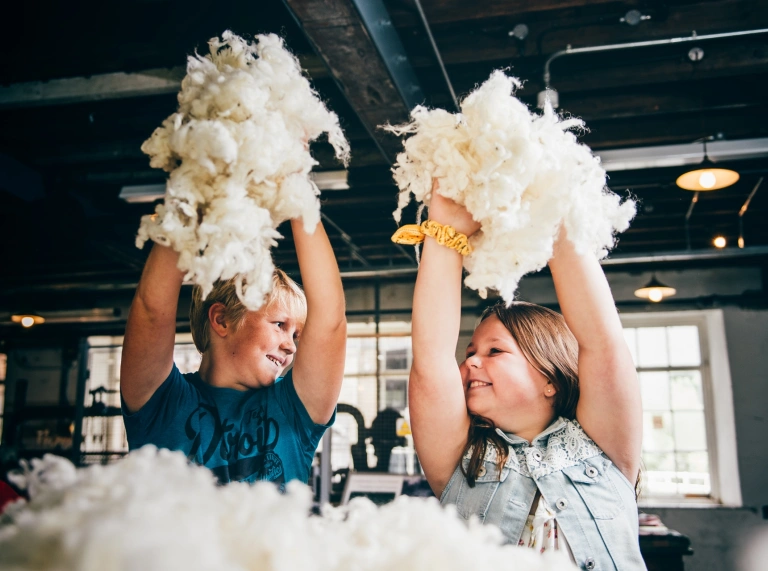

They bring to life the stories of the people who worked in the industry, and its history and legacy in Wales. The work areas are fascinating, providing a sensory experience. Visitors can hear the noise and smell the aroma of lanolin and oils from the working machines, and see the visually striking cloth on the looms. The Textile Gallery showcases wonderful Welsh textiles, including blankets, quilts, flannel shirts and colourful tapestry clothing.
We work closely with others in the local textile industry to continue cloth production in West Wales. Alongside the museum, we have the commercial mill Melin Teifi. This is an exciting time for the National Wool Museum, as we are in the process of bringing the mill and its machinery into the museum. Its current owner is retiring after 58 years, and we will continue the tradition of weaving Welsh flannel and tapestry blankets in the Teifi Valley. We will keep on developing the skills and knowledge to support other mills.
Wool is a sustainable natural fabric. It is renewable, biodegradable and recyclable, and is increasingly becoming the fibre of choice for our clothing and homes as we move towards living more sustainably.
Big Pit National Coal Museum
Big Pit National Coal Museum is a working coal mine that forms part of the Blaenavon Industrial Landscape, a World Heritage Site. It attracts around 150,000 visitors a year, most of whom experience the world-famous underground tour.
It's an extraordinary experience. Not only do you get the opportunity to go 300ft underground and take a guided tour through the mines, you can also meet and talk with people who once worked in the mining industry. These are our miner guides, who facilitate your underground visit and the above-ground museum experience, and our specialist technical team, who help keep the museum and mine running smoothly.
In the former Pithead Baths, there’s a museum space where you can learn more about the people who worked in the industry and find out about its rise and fall from a human perspective. There’s also ‘King Coal’, an immersive audiovisual experience that brings to life what it was like to work underground, using a film and displays of equipment.
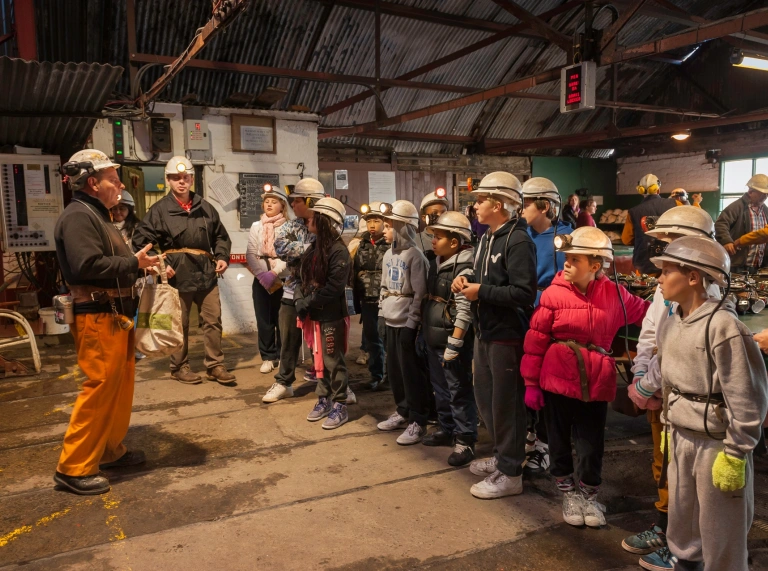
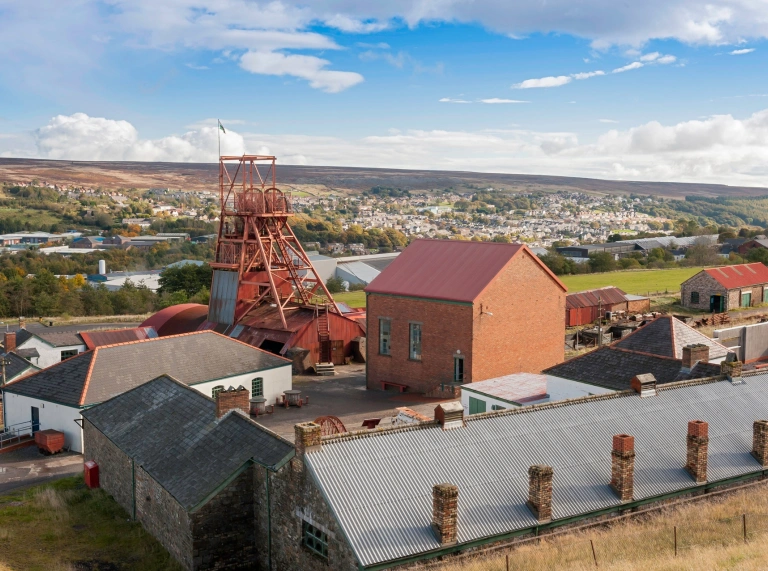
National Waterfront Museum
The National Waterfront Museum in Swansea gives an overview of the human story of industry and innovation in Wales. It provides a national picture of the past few centuries and the future, with exhibitions, displays and insights into technology from all over Wales.
The museum receives around 270,000 visitors a year and has a very strong reputation for civic and community engagement. It was given the UK’s first Museum of Sanctuary Award, recognising the work it does in welcoming refugees and those seeking asylum.
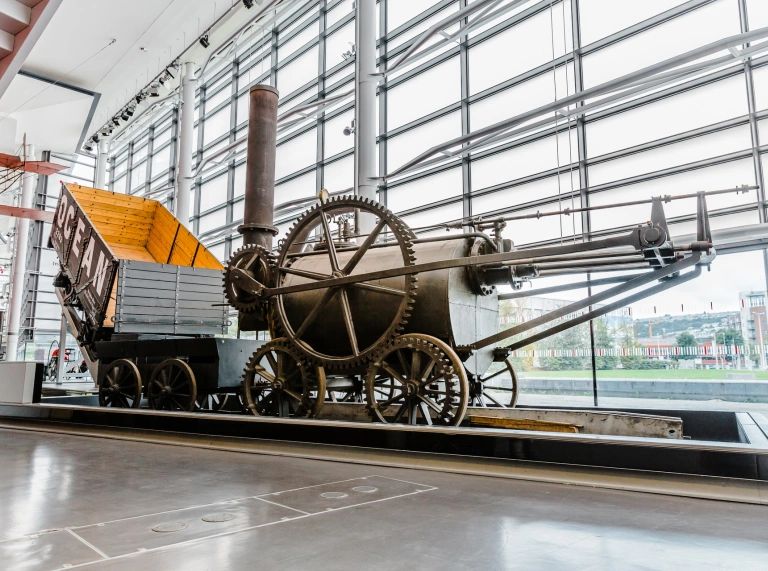
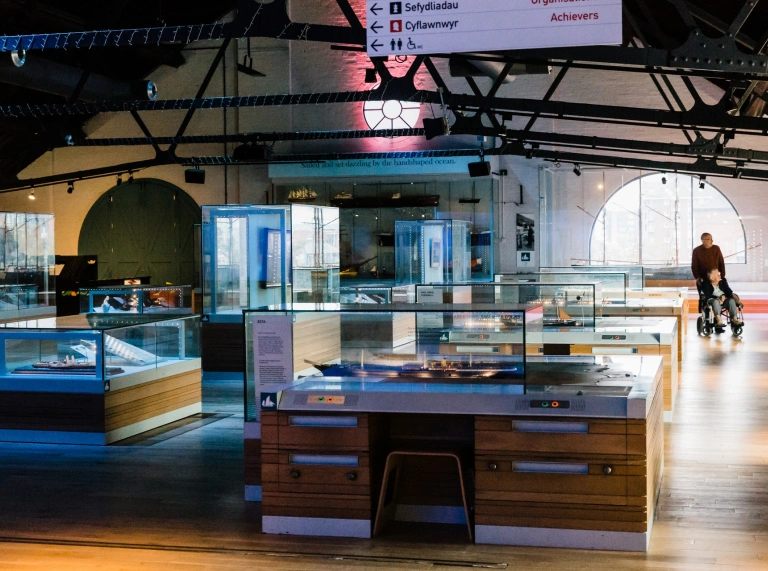
The National Waterfront Museum works with many community partners, such as the GRAFT garden project. Created through collaboration with different community groups and volunteers, the garden is a sustainable, organic growing environment that has created an edible landscape. It encourages participation and conversation, and produces vegetables, fruits and herbs that are donated to many groups throughout the area.
The exhibitions and displays make the museum immersive, interactive and fun for all ages. It's a great place to visit, socialise and meet up with friends to explore Wales' history and enjoy Swansea's waterfront.
National Roman Legion Museum
The National Roman Legion Museum in Caerleon is a small museum that tells the story of the town and its former occupants: the Romans. It welcomes around 70,000 visitors a year, giving them the chance to learn who the Romans were and how they lived. The stories are conveyed through objects such as coins, jewellery and other items that the Romans brought to Wales. Some are very significant, such as the Bath stone coffin containing the remains of a Roman soldier, and the oldest piece of writing in Wales. There’s a Roman garden to walk around, and the fortress and baths (managed by Cadw) and the amphitheatre are just a short walk away.
St Fagans National Museum of History
St Fagans National Museum of History has long been one of the UK's most popular heritage attractions. It has won many awards, including Art Fund Museum of the Year and the UK public’s favourite attraction in Which? Magazine. It attracts around 700,000 visitors a year.
The open-air museum stands in the grounds of St Fagans Castle and Gardens, a late 16th century manor. The museum comprises 50 historic buildings from across Wales, which have been re-erected in the 100-acre parkland. Visitors can freely walk around these incredible buildings, the castle grounds and the gardens, making it a truly brilliant day out.
Alongside that, there are three award-winning galleries (two in the main building and one in the grounds) that were created in the recent redevelopment. There, you can learn about the social history of Wales, from the Bronze Age right through to today.
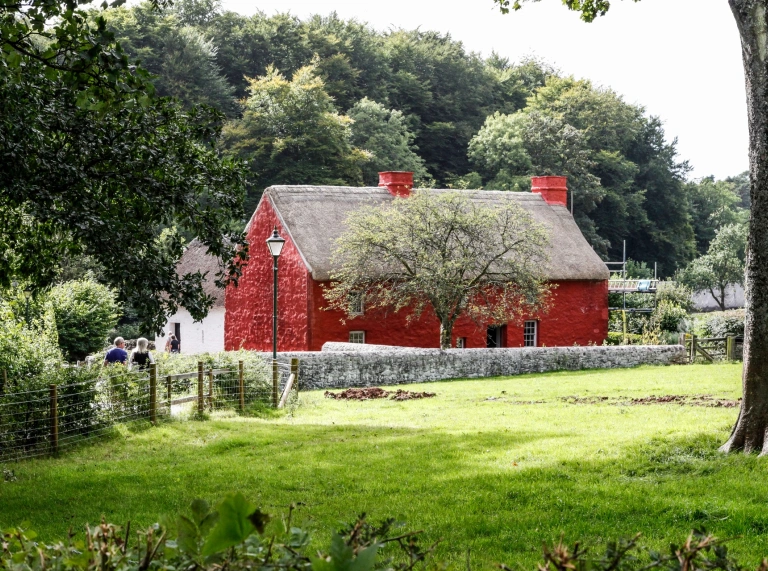
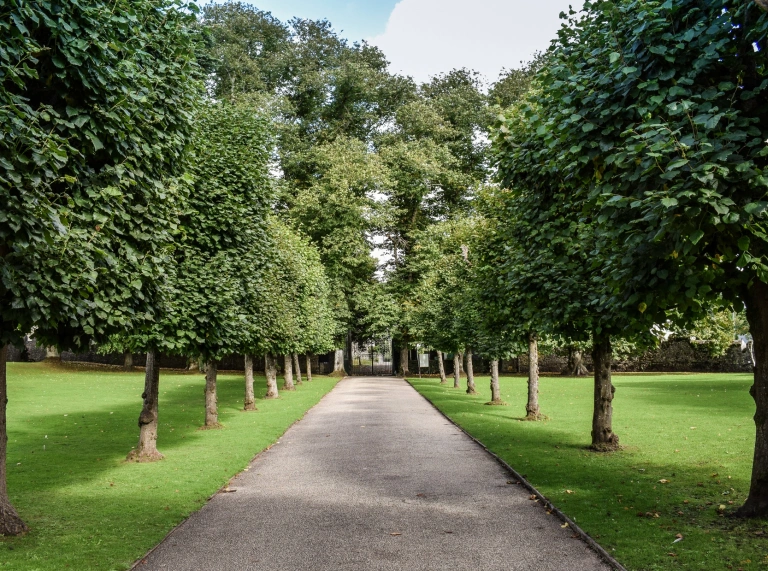
We work with a lot of different partners. During the redevelopment, we involved more than 120 community organisations and other groups to shape the new gallery and the design of the main building. These relationships continue to influence our work.
Crafts and heritage are important at St Fagans. There's a focus on makers and their skills: we have a blacksmith, miller, weaver and clogmaker working at the museum. There are often live demonstrations and special events, such as craft fairs and food festivals, as well as a high ropes activity for children and adults. We also have a working farm on the site, with rare breeds and live lambing cameras in the spring.
Visitors can walk around 50 historic buildings from across Wales, re-erected in 100 acres of parkland."
National Museum Cardiff
National Museum Cardiff, a beautiful Grade I-listed building at the heart of Cardiff’s historic Civic Centre, receives over 500,000 visitors a year. Inside, you’ll find an internationally significant art collection that includes contemporary, historical, photographic and Welsh art, as well as fantastic natural science collections. It's Amgueddfa Cymru’s flagship venue for major exhibitions. The 2022 summer shows included Wildlife Photographer of the Year, The Rules of Art?, David Hurn: Swaps and a new community co-produced exhibition, Reframing Picton.
One of the most popular permanent exhibitions is the impressionist collection, which is internationally renowned. Another visitor favourite is the dinosaur section of the natural sciences collection, complete with fossils, bones and geological finds.
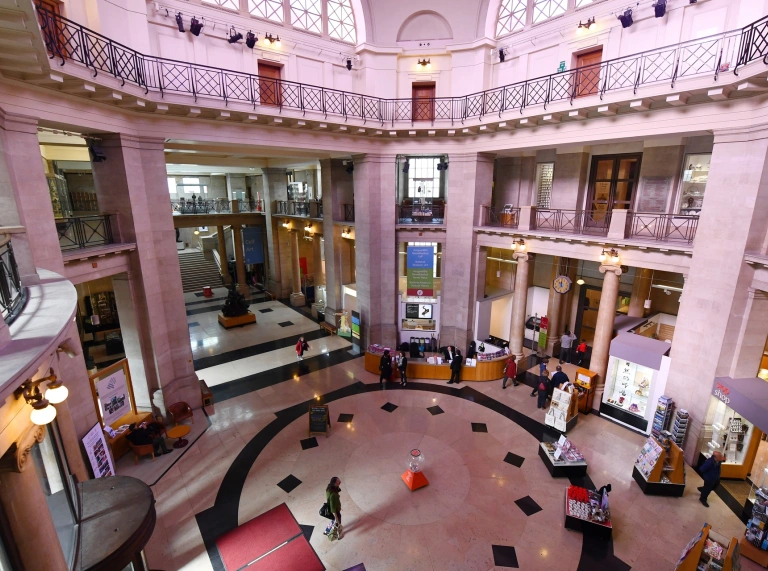
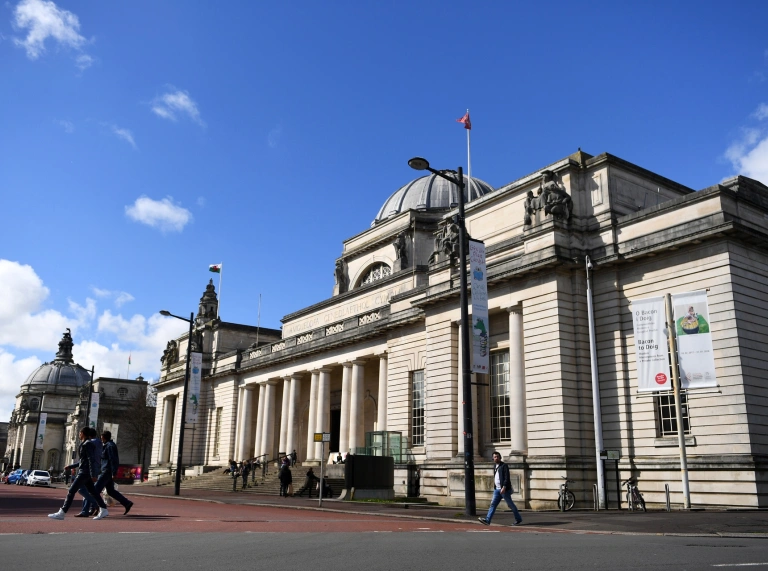
There are regular activities linked with the exhibitions and the collections, as well as one-off events. We’re currently piloting late-night openings on the first Thursday of each month. Opening hours are extended to 9pm to give people more opportunity to explore the museum at a time of day that suits them – after school, work, or lectures, for example.
All our museums are the ideal places to visit and revisit with family and friends. Find your favourite gallery, object, painting or experience in these unique places that are open for all to enjoy.
For more information, visit museum.wales.
Cultural heritage can change lives. The museums belong to the people of Wales and are open to all."





